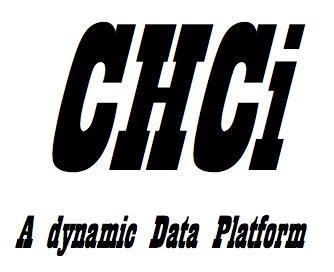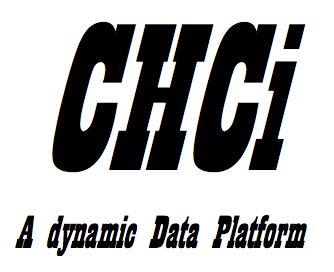CHCi - A dynamic data platform: A dynamic data platform for clinical data capture and use

We designed and developed a dynamic data platform to support clinicians’ varied needs for recording additional data about their patients outside of direct patient care.
Cincinnati, OH United States HIT Hospital Solutions Hard to Categorize MedStartr Ventures challengeAbout our project
The problem we solve: All academic medical centers have a strong desire to maximize the value of their clinical data for secondary use purposes such as quality improvement (QI) and research. However, this need has not been adequately fulfilled due in part to the fact that the data capture functions in current electronic health record systems predominantly focus on clinical documentation and billing, lacking the flexibility to allow the collection of additional data elements critical to QI or research.
About our solution: To address this gap, we designed and developed a dynamic data platform to support clinicians’ varied needs for recording additional data about their patients outside of direct patient care. This informatics solution has high extensibility, accessibility, accountability, and interoperability.
Progress to date:
In developing the platform, we partnered with the frontline clinicians in an academic congenital heart canter, and adopted the agile software development approach with numerous rounds of formative evaluation and iterative refinement. Since 2013, this platform has been successfully used to meet the dynamic QI and research data needs of clinicians in the congenital heart center. Future work includes improving the efficiency and effectiveness of the platform and incorporating cutting-edge data interoperability standards.
About Our Team

Creator: Danny T.Y. Wu
Location: Ohio
Bio: Dr. Danny T.Y. Wu is an Assistant Professor at the University of Cincinnati Department of Biomedical Informatics (BMI). His research draws on user-centered design and evaluation and data analytics to maximize the value of clinical data stored in electronic health records to improve care quality and support clinical and translational research. Wu received both his PhD and master’s degree from the University of Michigan School of Information prior to joining UC. Before going to graduate school, he worked as a software engineer for four years. In addition to research, Wu is dedicated to education, service, and practical engagement. He was appointed as a lecturer in the Department of Health Management and Policy at the University of Michigan in Fall 2015, teaching a graduate-level course on database systems and Internet applications. He was a senior analyst leading a programming team to develop, implement, and innovate dynamic data capture systems at the University of Michigan Congenital Heart Center. Wu served on the student editorial board of the Journal of American Medical Informatics Association in 2015 and 2016.
Title: Assistant Professor
Advanced Degree(s): Ph.D
About Team Members
Kai Zheng
Associate Professor, Ph.D
Biography: Dr. Kai Zheng is an Associate Professor in the Department of informatics at the University of California, Irvine. As a leading expert in the field of health informatics, Dr. Zheng is pioneering new ways of harnessing and utilizing information to improve health outcomes and maximize quality of life. Dr. Zheng's research has great emphasis on technology design as key to transforming healthcare. His work has the potential to impact people across the whole spectrum of care giving and receiving. As part of Dr. Zheng's research, he is creating intuitive, consumer-facing applications that empower people to take control over their own health and wellness management. Dr. Zheng was the primary PhD mentor of Dr. Wu and a faculty advisor of the proposed health IT innovation.
Title: Associate Professor
Advanced Degree(s): Ph.D
David Bradley
Professor, MD
Biography: Dr. David Bradley is a Professor of Pediatrics at the University of Michigan, Ann Arbor. His research interests include interventional heart rhythm ablation techniques, pediatric device implantation, new pacing devices, postoperative arrhythmias, channelopathies, and sudden death prevention. Dr. Bradley is the lead of the Michigan Congenital Heart database team and a faculty advisor of the proposed health IT innovation.
Title: Professor
Advanced Degree(s): MD
About Our Company

CHCi - A dynamic data platform for clinical data capture and use
Location: 231 Albert Sabin Way ML0840
Cincinnati, OH 45229
US
Founded: 2013
Product Stage: Prototype/MVP
YTD Sales: Working on it
Employees: 3-5
How We Help Patients
The data platform helps patients indirectly. By have all clinical data collected in a single place, quality improvement and clinical research can be easily conducted to improve care delivery and outcomes, as well as support evidence-based medicine.
How We Help Physicians
The data platform is designed to facilitate direct data entry from physicians and other providers with high usability and workflow supporting. Providers therefore can have lower data entry burden, and potentially get higher quality of clinical data and gain more time with patients.
How We Help Hospitals
Some performance data cannot be collected in EHR systems and integrated with other clinical data. Hospital administration and leaders can therefore benefit from the data platform by collecting these data and receiving reports automatically generated on the platform. They also can avoid huge cost to work with EHR vendors to address their data needs.
How We Help Partners
The data platform can partner with EHR vendors. In this way, vendors can focus on improving their main product to better support clinical work and billing without worrying about clinicians' varied data needs.
Challenge Mission
Key Milestones Achieved and Planned
In the year 2018, we plan to do a beta release of the data platform with a focus on improving its performance, enhancing its ability to discover patient cohorts, and incorporating cutting-edge data interoperability standards. We will seek more use cases and prove the generalizability and customizability of the platform.
Our Competitive Advantages
Electronic Health Record system venders may enhance their produce's ability to support quality improvement and clinical research. However, these solutions may be costly, cumbersome, require a significant amount of vendor cooperation, and are difficult to maintain due to frequent vendor software upgrades and/or legal regulatory compliance. Existing software applications (e.g. REDCap) are either designed as standalone tools and are therefore difficult to integrate into clinicians’ workflow, or are largely redundant with EHRs, requiring a significant amount of double data entry. Our solution addresses these gaps as a companion software system that work side-by-side with an EHR to provide supplementary functionality in supporting research data capture.
Barriers to Entry
We have filed software disclosure at the University of Cincinnati and University of Michigan.
Traction, Funding and Partners
No funding and partners as of 10/16/17.
Innovation Details
Intellectual Property Summary
University of Cincinnati Software Disclosure # 118-029.
Clinical Information
Not Applicable.
Regulatory Status
Not Applicable.
How we will use the funds raised
The goal for 2018 is to refine the prototype and support the beta release of the product to seek more use cases and funding opportunities. We plan to hire three graduate students for a total of 3,000 hours of work at the rate of $16/hr. Each student will work 20 hours a week for a year. Extra $2000 is budgeted for renting virtual servers (web and databases) for a year through University of Cincinnati College of Medicine IT group. The total budget for 2018 is $50,000.
Thank You
We designed and developed a dynamic data platform for clinical data capture and use. This platform has been implemented at an academic congenital heart center and successfully supports the clinicians’ dynamic data needs since 2013. We learned that modularization, iterative improvement, and user education are the keys to our success. We believe the platform has great potential to serve as a long-term registry management system, and are improving the platform’s performance, enhancing its ability to discover patient cohorts, and incorporating cutting-edge data interoperability standards.
Updates
No updates found .
Supporters
Help us find best new ideas to fund by telling us what you think. Your feedback goes straight to the team behind this project in private, so tell them what you really think.
Index Score
55
Score
0
Score
2
Likes0
Partners0
Pilots0
Follows-
This campaign has ended but you can still get involved.See options below.
Help us find best new ideas to fund by telling us what you think. Your feedback goes straight to the team behind this project in private, so tell them what you really think.



